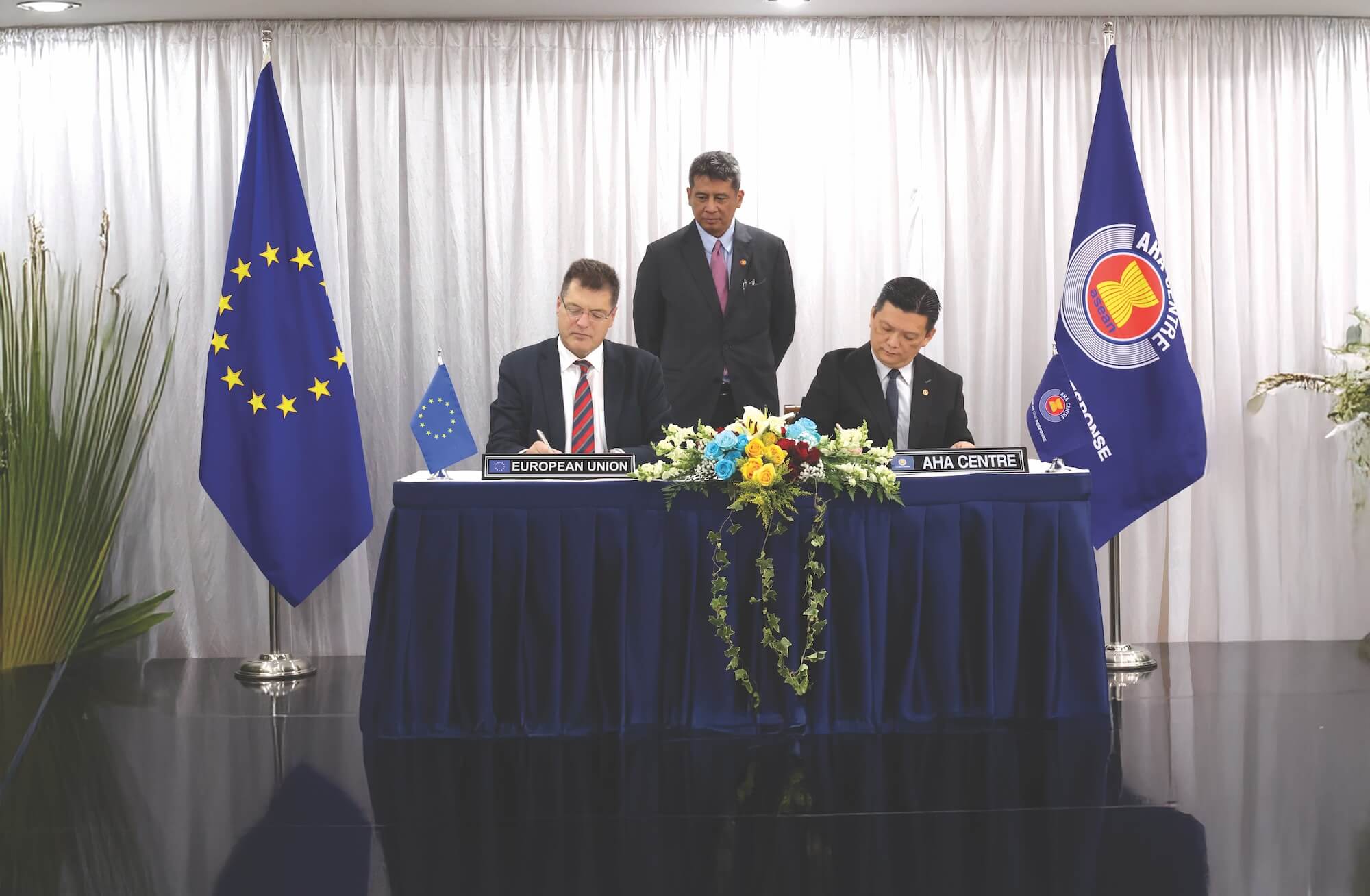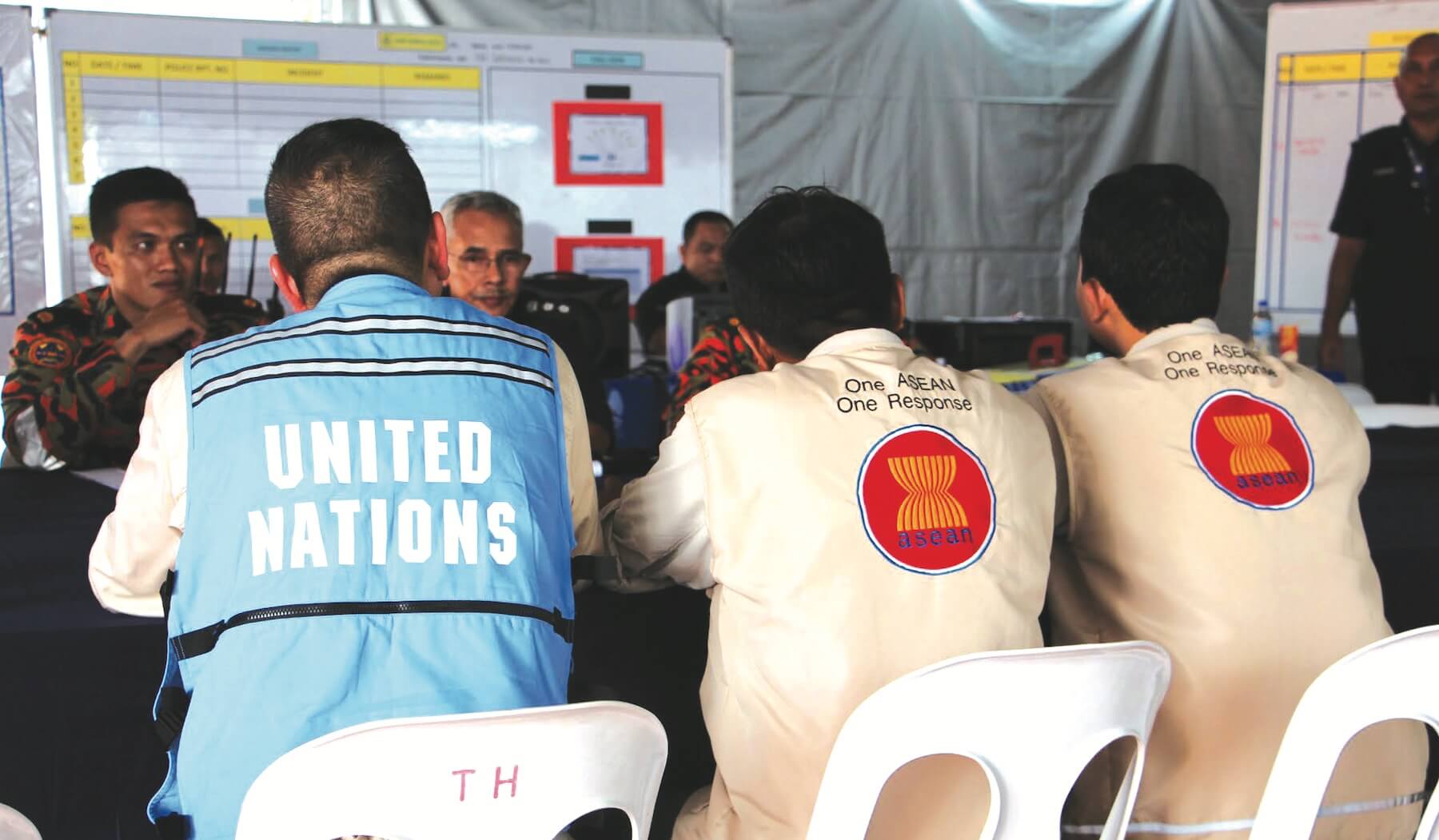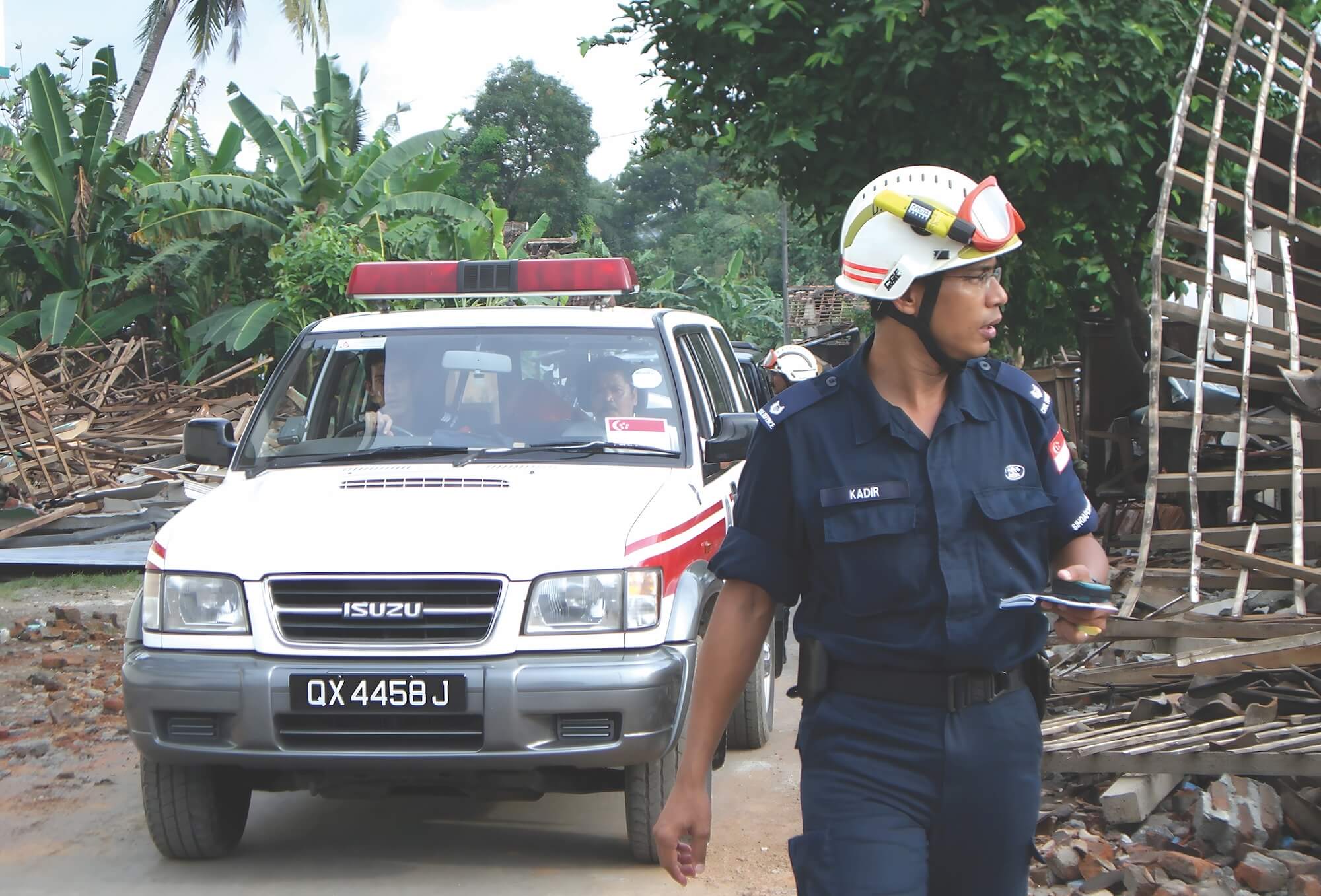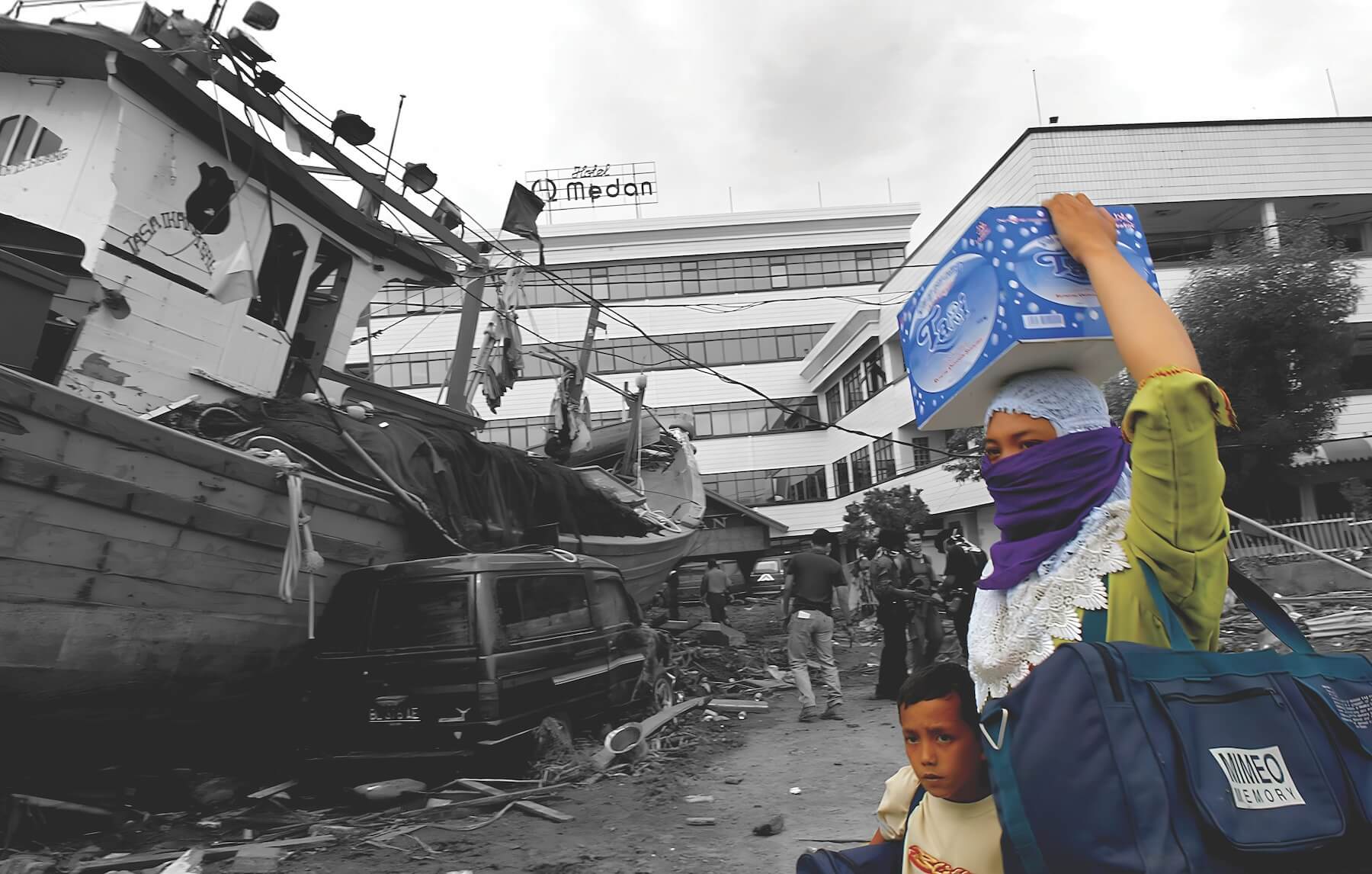





Shortly before 8 a.m. of 26 December 2004, a 9.1 magnitude earthquake, one of the most powerful in recorded history, shook the ground in Aceh, North Sumatra, Indonesia. Residents rushed out of homes and buildings; some fled for safety and to higher grounds. People on the coast saw the waters recede, but most of them were unaware of the impending disaster that would wipe out whole villages and take away so many lives.
Less than thirty minutes later, tsunami waves as high as 30 metres came crashing into Aceh’s coasts and caused flooding up to 5 kilometeres inland. 800 kilometres of Aceh’s coastline were affected.
Within hours, the deadly waves devastated several coastal areas in Thailand, Malaysia, Myanmar, Sri Lanka, India, and other countries across the Indian Ocean. Like in Indonesia, residents and tourists near the shores were oblivious to the tsunami coming from Sumatra.
The reach and impact make it one of the most devastating disasters in modern history, underscoring the urgent need for coordinated disaster management on a global scale.
Indonesia was the worst hit, causing Aceh province and its people unimaginable loss and grief. Just three months after the Indian Ocean tsunami, a magnitude 7.7 quake and tsunami hit Nias island off the coast of Sumatra, causing even more deaths and devastation.
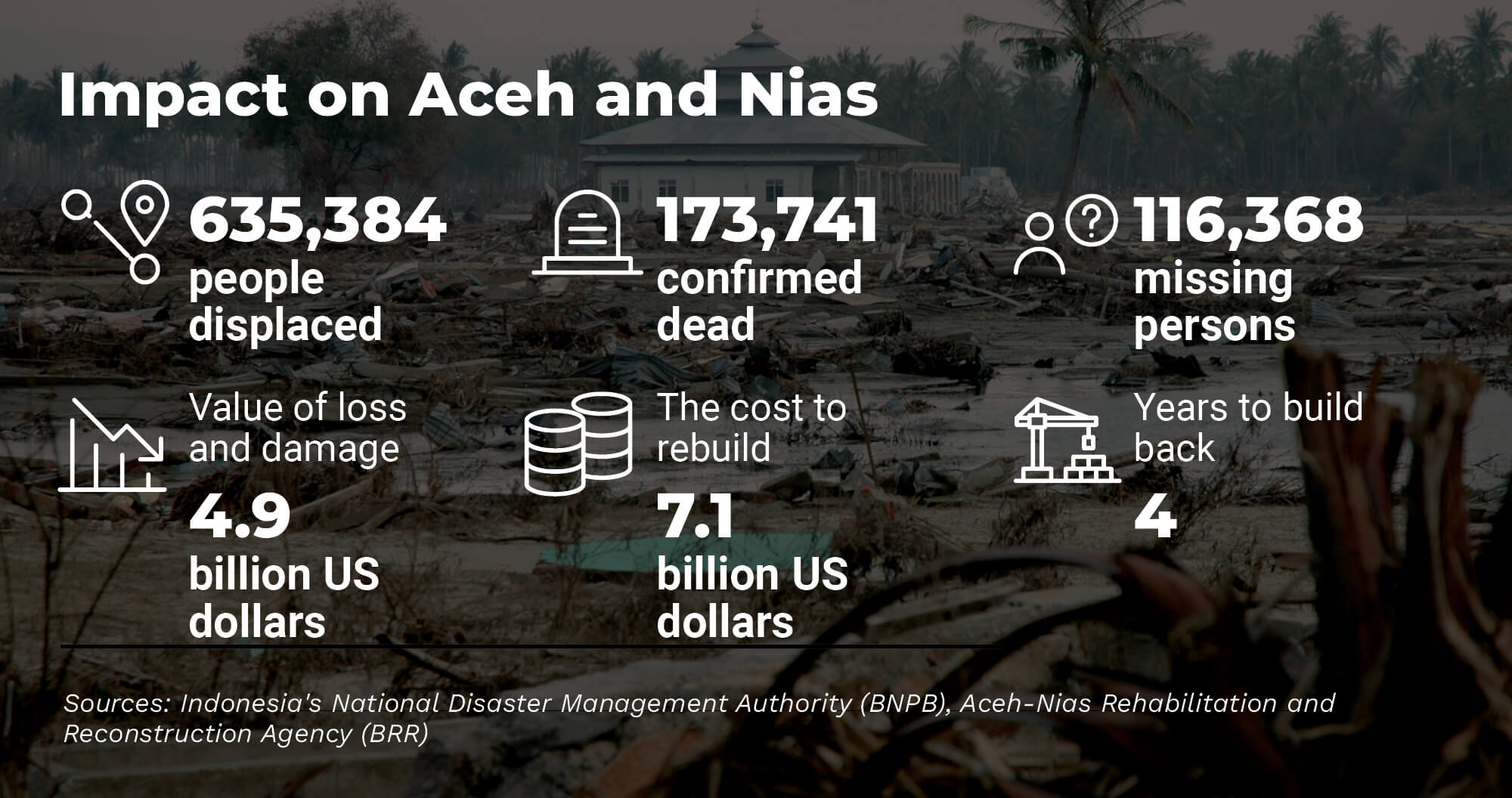
Response and recovery from ground zero
In Aceh, recovery efforts began almost immediately, with international aid pouring into the region. Volunteers around Indonesia and the world came together to help with search and rescue operations, provide medical assistance, and distribute food and supplies.
A total of 6.9 billion US dollars was committed to Aceh’s recovery and reconstruction by the Indonesian government and about 900 bilateral and multilateral donors and non-governmental organisations. It became one of the most extensive humanitarian efforts in recent history, demonstrating the power of collective action in times of crisis.
Then President Susilo Bambang Yudhoyono recognised the need for efficient and effective coordination to help Aceh and Nias build back better. On 16 April 2005, Yudhoyono created the Aceh-Nias Rehabilitation and Reconstruction Agency (Badan Rehabilitasi dan Rekonstruksi or BRR). The ministerial-level agency’s mandate was to implement rehabilitation and reconstruction projects financed by the government of Indonesia and to coordinate projects funded by external donors. The President appointed an experienced bureaucrat and former Energy and Mines Minister Kuntoro Mangkusobroto as Head of the BRR.
One of the agency’s main tasks was to ensure projects were planned and implemented effectively to meet the needs of beneficiaries. Said Faisal, a native of Aceh, left his finance job to serve as one of BRR’s deputies. He said the agency had to hit the ground running. “When we were inaugurated by the President on Sunday night, Tuesday night, we flew to Banda Aceh.” He adds, “We became famous (for) what we call building a ship while you are sailing and facing the storm, and you must reach (the) destination. That’s the game.”
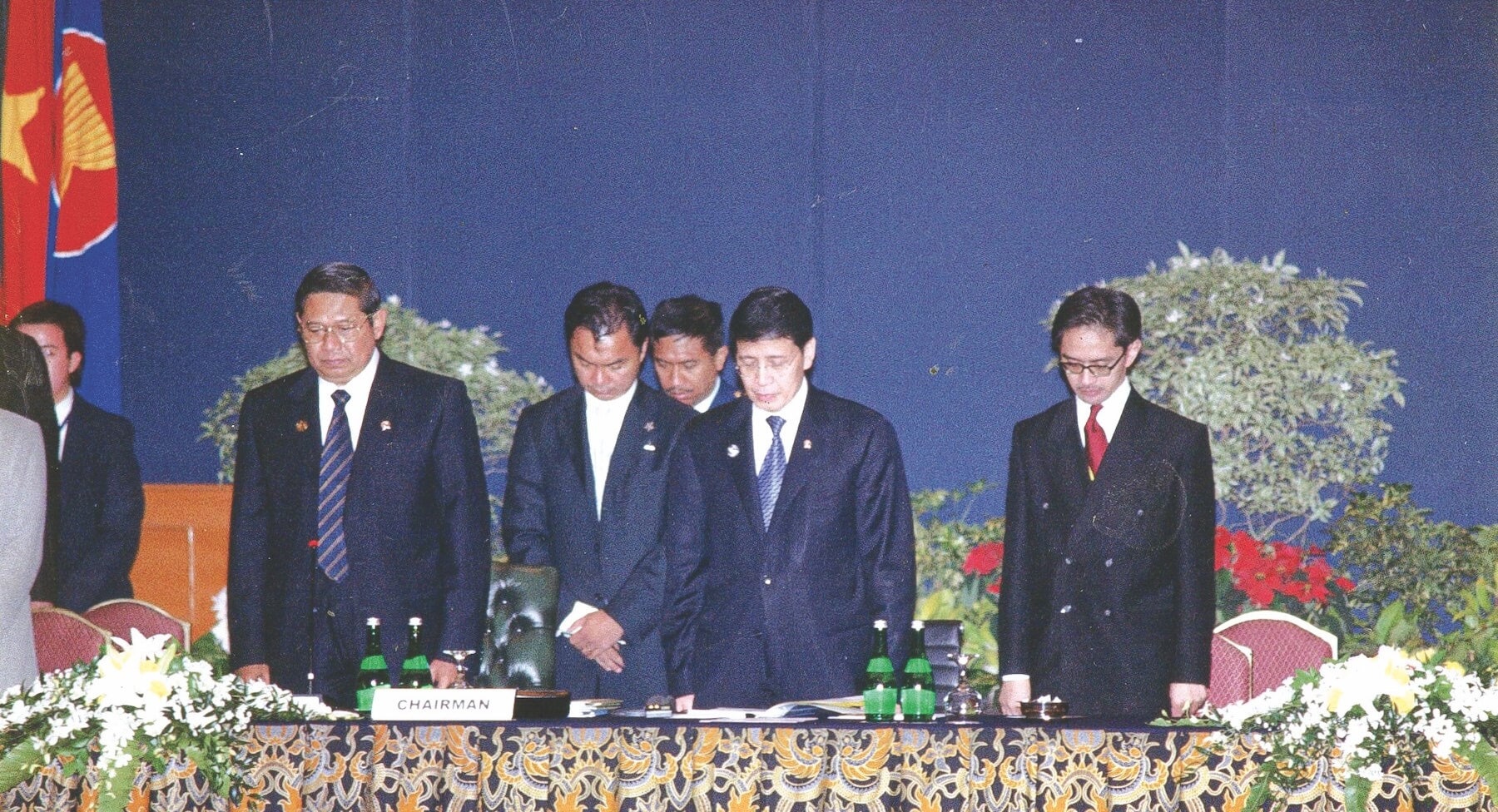
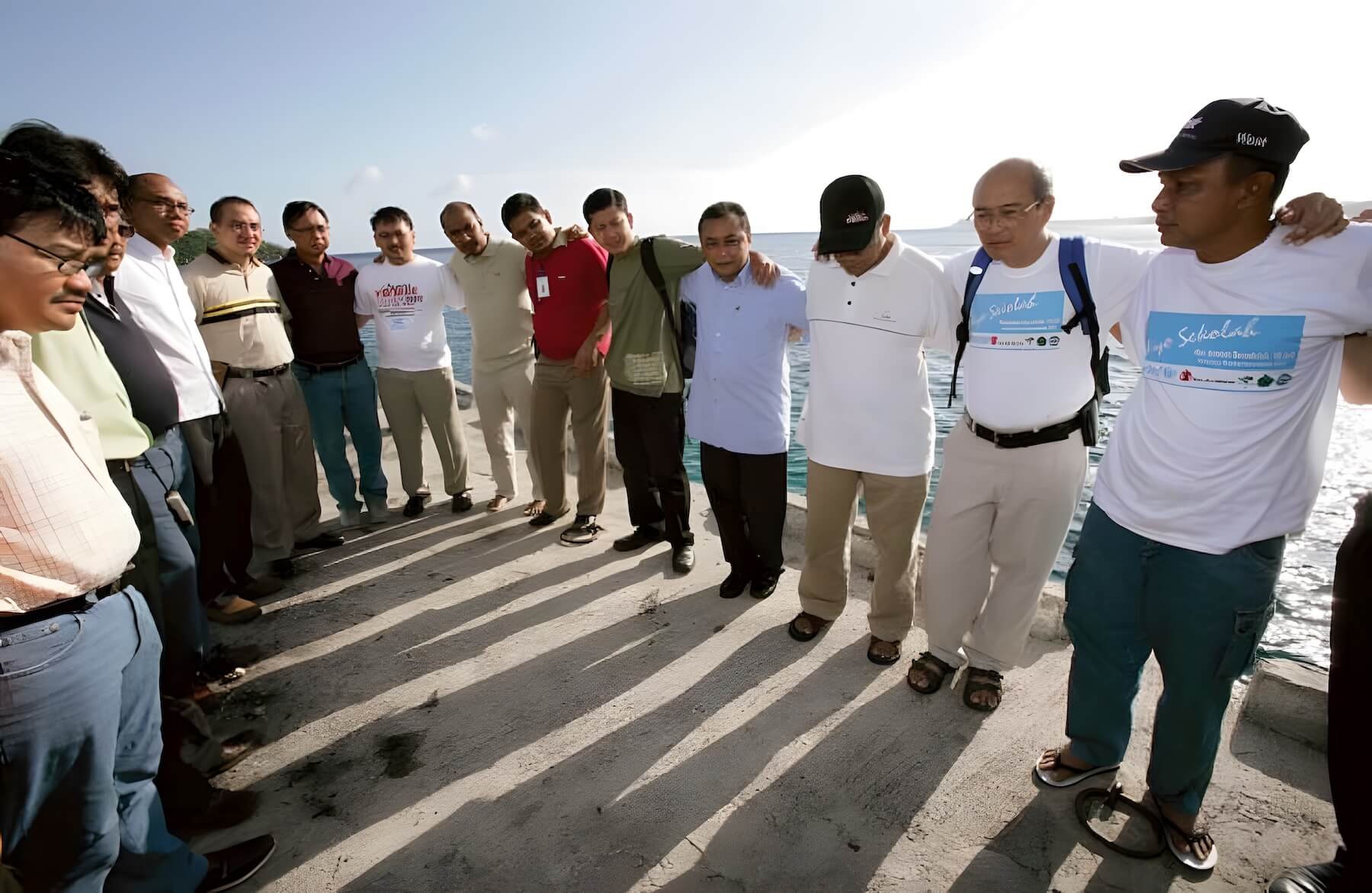
The BRR’s tasks seemed impossible, but with Mangkusobroto’s able leadership, the agency’s vision and mission were clear. “In a crisis, the most important question is ‘who is in charge?’ and that has to be one organisaton. So, the clarity of who is in charge, who has the full authority to coordinate and execute is very, very important,” explained Said.
Rebuilding the affected areas was a process, with funds and assistance from multiple donors and organisations. Still, BRR had the authority to make decisions on implementing the master plan, approval of project proposals, matching donor funds with high priority projects, facilitation between agencies, fund disbursement and project monitoring and evaluation.
Said stressed that “everything about Aceh had to be decided in Aceh, not Jakarta.” With this governance and efficiency, new homes, schools, and infrastructure were constructed, and efforts were made to restore the livelihoods of those who had lost everything.
Also crucial was the BRR’s commitment to transparency and accountability, which helped build trust with affected communities and donors. A database with information on funds, proposals, procurement, and project monitoring was available to the public. Said Faisal stressed that, “we must remember, Aceh was a place that was destroyed by the tsunami at that time and has endured thirty two years of conflict. What is the most expensive commodity in a conflict area? (it’s) trust.” BRR was the first government agency to have an autonomous and independent anti-corruption unit. The BRR also involved local communities in planning and implementing recovery projects, which helped ensure that their needs were met.
After four years, 6.7 billion US dollars or 93 per cent of the pledged funds were committed. The BRR reported these achievements:
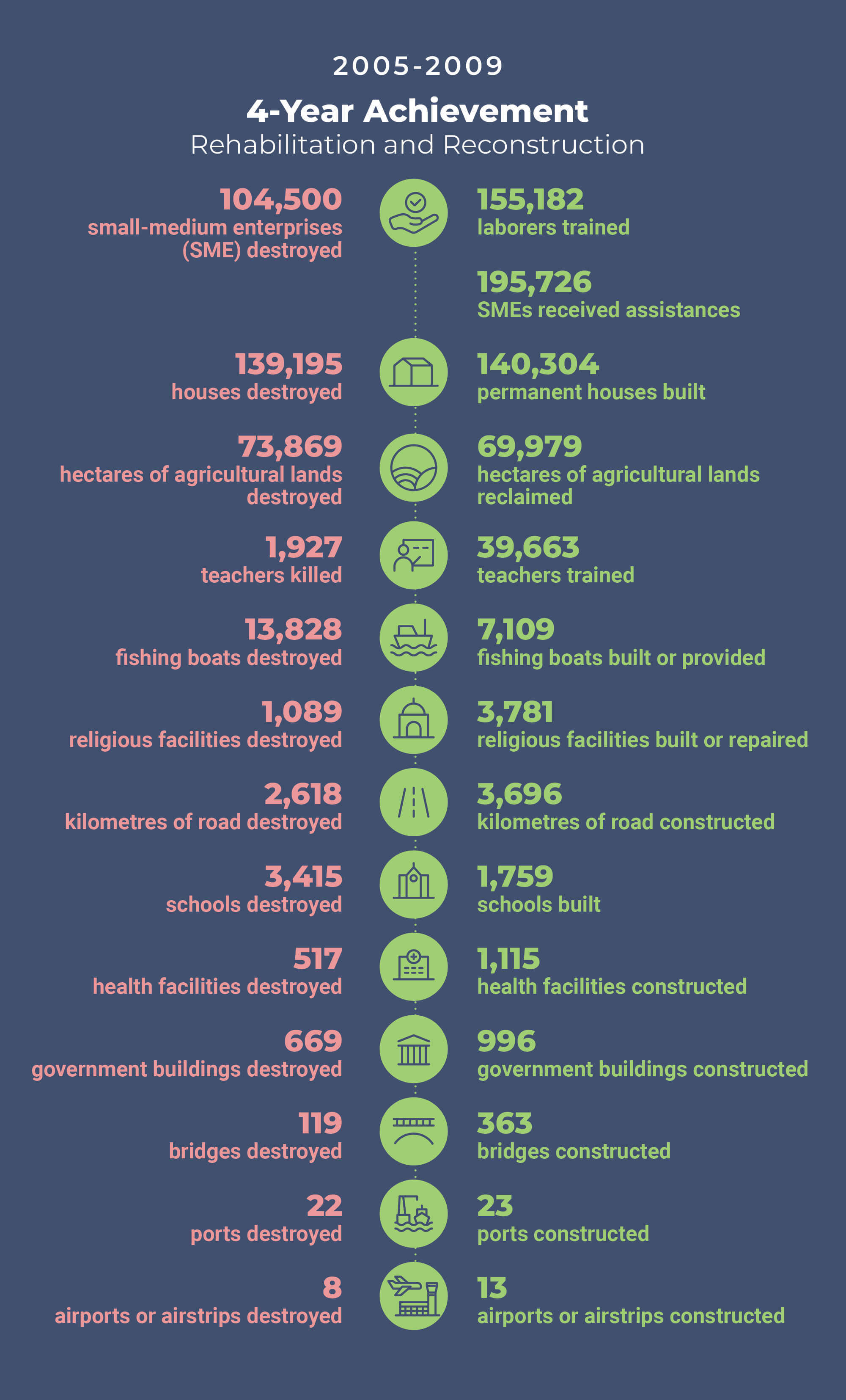
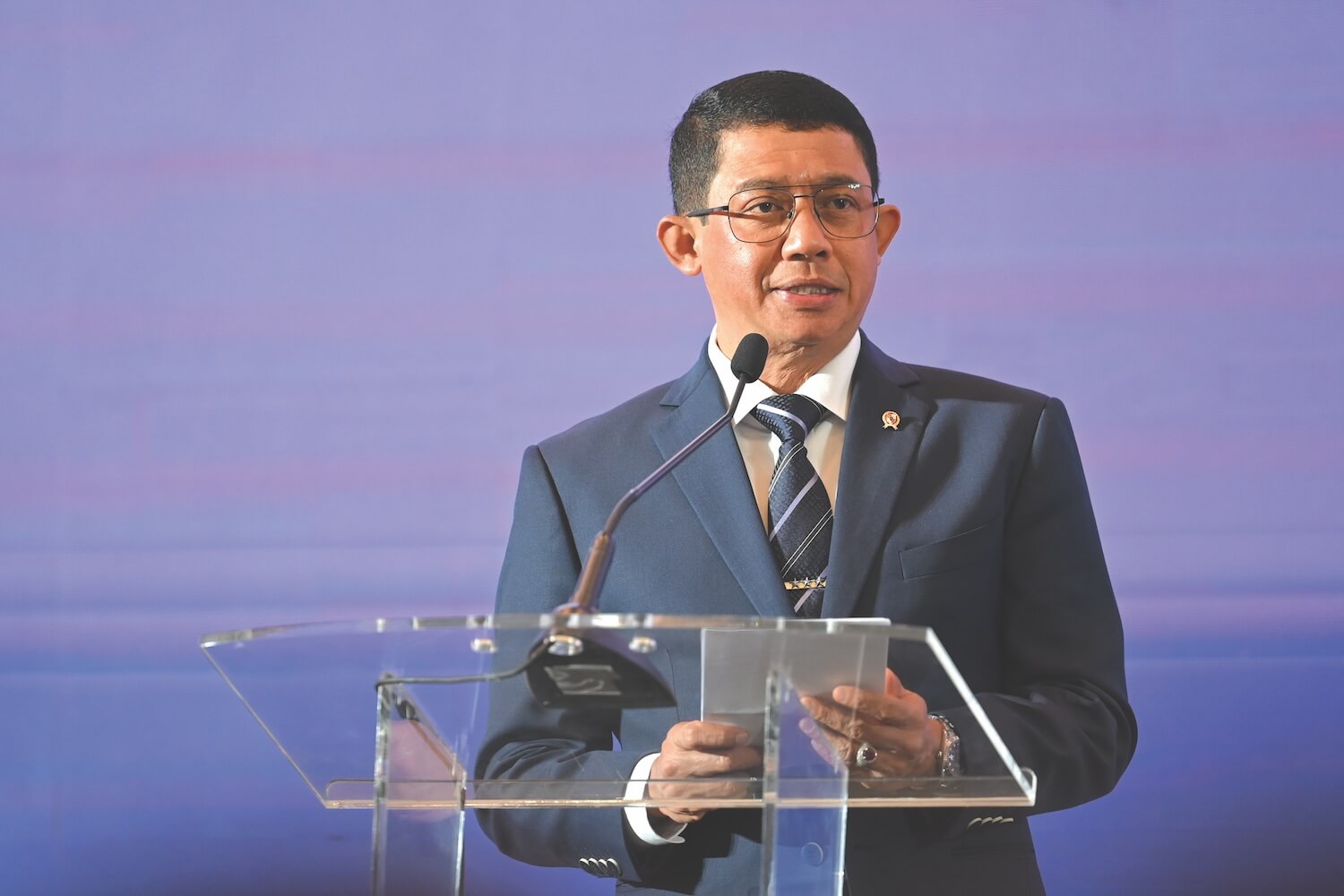
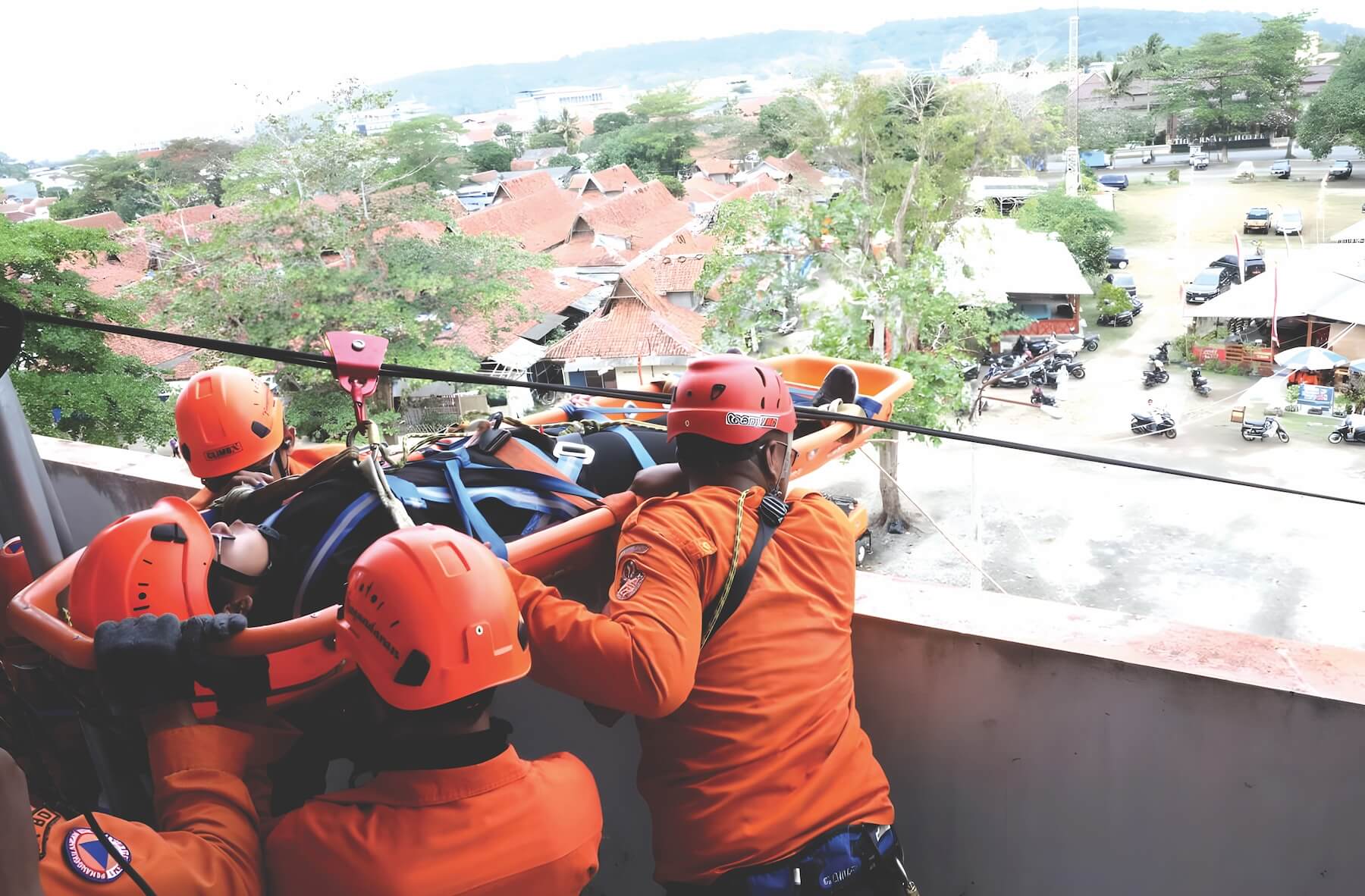
Said went on to serve as the first Executive Director of the ASEAN Centre for Humanitarian Assistance (AHA Centre) on disaster management. Several other officials of the BRR joined him, sharing their expertise and experience with the ASEAN and the AHA Centre.
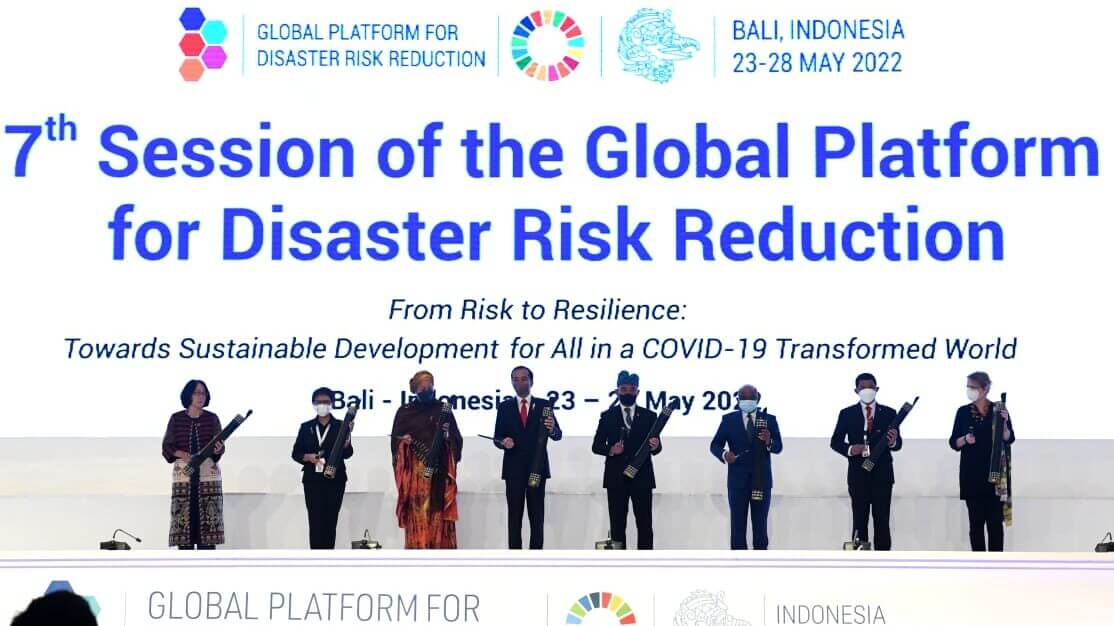
Indonesia’s disaster management, 20 years on
The 2004 tsunami in Aceh was a turning point for disaster management in Indonesia and since then, a significant of progress has been made.
“Indonesia has recorded nearly 1,400 disasters as of September 2024,” according to Lt. Gen. Suharyanto, Head of Indonesia’s National Disaster Management Authority (BNPB). Speaking at the opening of the 2nd Global Forum for Sustainable Resilience (GFSR), Gen. Suharyanto said that most of these natural disasters were hydrometeorological, including floods, landslides, and droughts, and were triggered by climate change and human activities.
“This figure represents a 52 per cent increase from the previous year, driven by climate change, urbanisation, and changes in land use. However, we are fortunate to see a significant decrease in the impact of these disasters, particularly in terms of casualties and infrastructure damage. Fatalities, including deaths, missing persons, and injuries, dropped by 36 per cent in 2023 compared to 2022. Similarly, infrastructure damage decreased by 63 per cent in 2023 compared to 2022.”
“While we may not be able to reduce the number of disasters significantly, we can certainly optimise our prevention and mitigation efforts to minimise their impact on human lives and property,” he added.
Gen. Suharyanto also highlighted the importance of technology exhibitions and conferences that promote the sharing of information and best practices. He emphasised that such events are concrete steps towards building a robust disaster management system. “This system is not only capable of responding when disasters occur but also focuses on risk mitigation and preparedness,” he said.
To mark the 20th anniversary of the Indian Ocean Tsunami, BNPB hosted the forum and an ASEAN high-level dialogue from 11-12 September 2024 in Jakarta, gathering participants from various sectors and countries to showcase technological innovations and solutions for disaster management and to facilitate discussions on strategies for building sustainable resilience in the face of increasing natural disasters. These events were held alongside the Asia Disaster Management and Civil Protection Expo and Conference (ADEXCO).
In May 2022, the 7th Global Platform for Disaster Risk Reduction (GPDRR) released the Bali Resilience Agenda, which calls for integrating disaster risk reduction into development and finance policies, prioritising investment in disaster risk reduction, addressing the climate emergency through disaster risk reduction measures, adopting a participatory and human rights-based approach, and ensuring everyone has access to early warning systems.
As the host of the GPDRR, Indonesian President Joko Widodo asked the international community to work together more in disaster risk management. He suggested working together towards sustainable resilience based on four principles: strengthened risk-reduction culture and education, investment in science, technology, and innovation, climate and disaster-resilient infrastructure, and implementation of global commitments.
Resilience was a crucial factor in the recovery process post-Aceh tsunami. Communities united to support one another, and individuals found strength in their shared experiences. The disaster was devastating but also served as a testament to the human spirit and the power of resilience.
Associate Editor Joanne B. Agbisit contributed to this report.
This article is based on the 2nd GSRF and ASEAN high-level panel discussions, and information provided by Dr. Raditya Jati, Deputy Minister System and Strategy, Indonesian National Disaster Management Authority and Mr. Said Faisal, former Deputy Head of the Aceh-Nias Reconstruction and Rehabilitation Agency.
Sources:
Aceh-Nias Rehabilitation and Reconstruction Agency (BRR), Indonesia’s National Disaster Management Authority (BNPB), United States Geological Survey (USGS), National Aeronautics and Space Administration (NASA), National Oceanic and Atmospheric Administration (NOAA)




